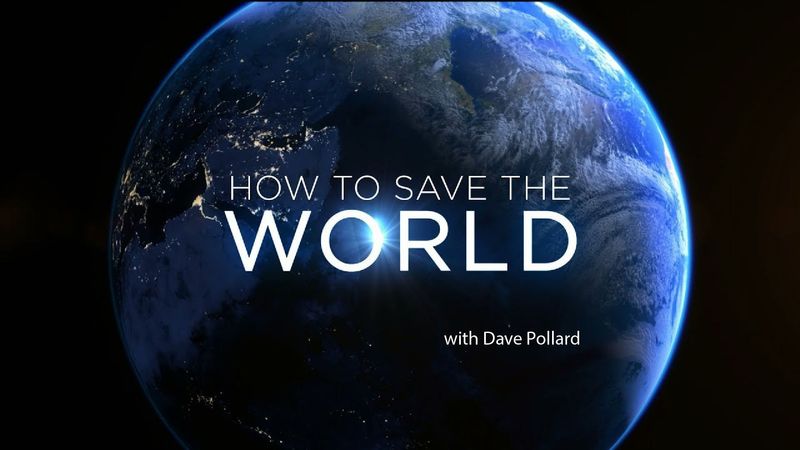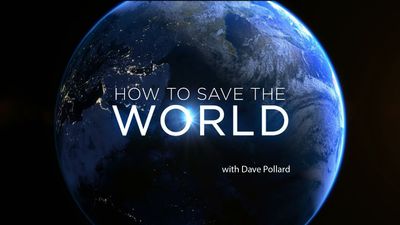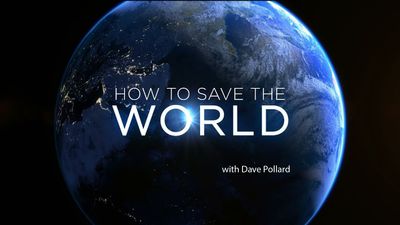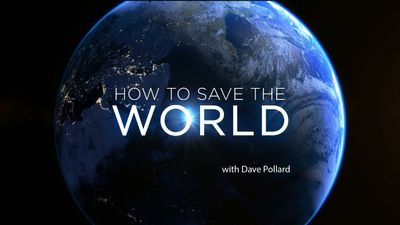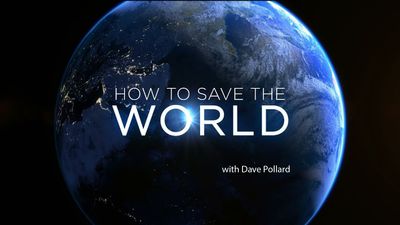Half Time Score: Coronavirus 10, Humanity 0
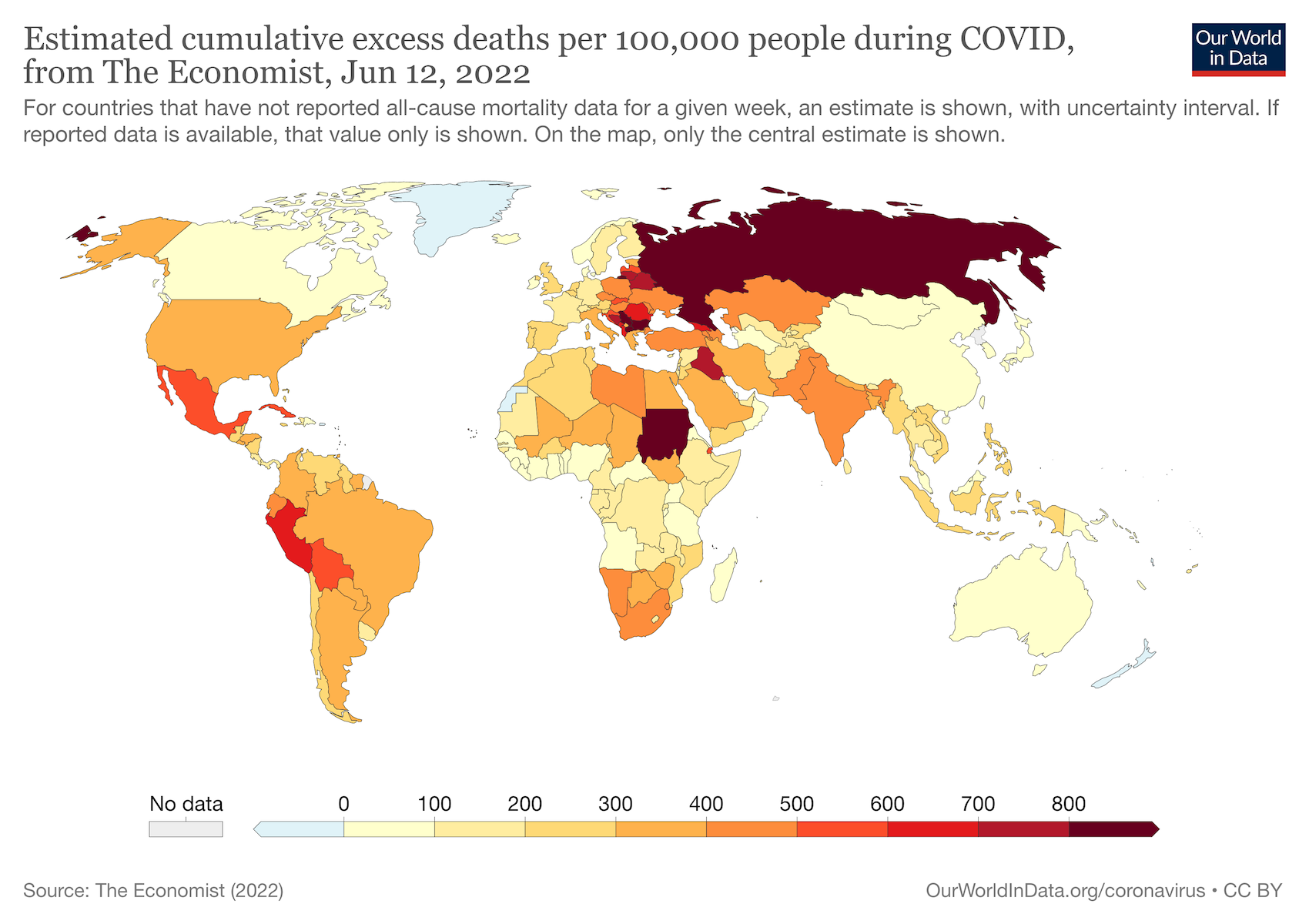
Hard to believe I’m still writing about this subject. But here we are.
Just about 2 1/2 years after its first appearance on the planet, and despite all human efforts, the latest estimates are that:
- 2/3 of the earth’s population has been infected at least once by CoVid-19, and an additional 10M infections are occurring daily
- the death toll, seasonally adjusted, remains about 15,000 more deaths per day, or about 5.5M more people per year
- while the IFR is dropping, the rates of infection and re-infection are soaring as vaccines wear off, vaccines less effectively block new variants, people refuse vaccines and boosters, vaccines and boosters are in short supply in many places, people refuse to wear masks, and we’re in the third “summer lull” in deaths; so the annual death toll shows no signs of declining in the foreseeable future
- the cumulative global death toll is now about 17M people
There is essentially no plan for dealing with this. The Go For Zero strategy was only seriously applied in a handful of countries, those where there was a high level of respect for public health guidance. That strategy is the only one that would have addressed this catastrophe. Rich countries are now mostly ignoring the pandemic and hoping it will magically go away, with the richest praying that the anti-viral Paxlovid will at least keep most of its sufferers from dying.
And when it comes to dealing with Long CoVid, we’re strictly in Hail Mary territory.
Fifteen years ago, when I worked in epidemiology planning for pandemics and other disasters for the government, the most experienced and wisest were saying that, culturally, we were simply not going to be able to respond to a serious, highly transmissible pandemic. I thought they were pessimistic. They were not.
We’ve given up. We’re no longer tracking new cases, and in many cases, we’re using surrogate measures for hospitalizations and deaths that downplay the continuing toll. We have no plan to deal with the next winter, which will inevitably bring another surge. We have no plan to deal with new variants, and the approved vaccines we have been using are increasingly impotent to deal with them. Vaccines specifically for new variants are so far behind the course of the virus they will likely be obsolete before they’re produced. And if a new variant emerges that is more virulent; we’re screwed.
How and why has this all gone so badly? Partly it’s the sheer increased complexity of human society that has squeezed more people into smaller areas and allowed them to travel way farther and faster, taking viruses with them than was the case with previous pandemics. The distrust of authority has caused a large part of the population to shun sensible health precautions. Partly it’s the cynicism of governments that prompts them to lie to their citizens and suppress or contradict sensible health advisories that citizens don’t want to hear.
Canada is an interesting case study. Like most of the countries in yellow in the chart above, Canada’s actual death toll per capita from the pandemic has been a fraction of the toll of the US and other countries in orange and red.
This is because, for the first year, the Canadian public generally trusted and heeded public health advisories. Masking, social distancing, and isolating rates were much higher than in most other countries, and vaccines were welcomed and taken overwhelmingly and promptly. It was that first 1 - 2 years when the IFR, the infection fatality rate, was high relative to the newer variants.
But look at this chart to see what has happened in 2022:
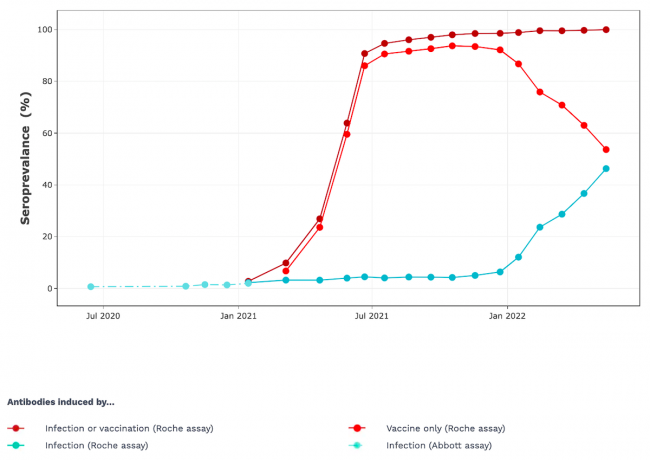
This chart, produced by Canada’s CoVid-19 Immunity Task Force has not received much press, I suspect most likely because the media don’t know what to make of it. Here’s what it says:
- Seroprevalence is the presence in a tested blood sample of significant CoVid-19 antibodies; the antibodies produced by an infected body are slightly different and distinguishable from the antibodies produced by a vaccine
- Widespread preventative measures (masks, distancing, shut-downs) were very effective at limiting infection of Canadians to less than 5% of the population (blue line) until the vaccines were produced.
- By the first half of 2021, over 80% of Canadians had significant CoVid-19 antibodies as a result of high vaccine take-up (red line)
- By the end of 2021, that percentage with vaccine antibodies was up to 90%, and still, only 7% of Canadians had been infected with CoVid-19; Canada was close to theoretical “herd immunity” and was starting to bank on that.
- The Omicron variant was a complete game-changer, totally upsetting the CoVid-19 management strategy of Canada (and many of the other countries shown in yellow in the top chart); in just the first five months of 2022, the percentage of Canadians with infection-related antibodies (ie, people who had caught Covid-19) soared from 7% to 47% (it is now over 60%)
- Because Canada stopped testing in 2022, it had no way of knowing that infections had soared until hospitalization numbers started to jump, and they had to ‘guess’ why
- This was further obfuscated by changes in the ways Canada computed “CoVid-19” hospitalizations and deaths.
- Only the above chart tells the tale — Canadians now rely as much on getting sick with CoVid-19 to get limited immunity as they do on the antibody resistance from their vaccines.
- Infections are soaring nearly as much among the vaccinated as among the unvaccinated (however, it should be noted vaccines and boosters remain the most powerful protection against serious cases of the disease-causing hospitalization or death)
- People are getting reinfected with the BA.4-5 variants in as short a time as 2-3 weeks after initial infection, showing that not only are vaccinations losing their power, infection is almost useless as a means of protecting yourself against future infection.
Canada has snatched defeat from the jaws of victory, and it's new daily per capita death, and hospitalization rates are now comparable to those of the US.
Many people made many mistakes, just as in the ‘orange’ and ‘red’ countries, and it would not be fair to blame this entirely on political meddling and incompetence. Likely, this trajectory was ultimately inevitable.
We’re still learning. Unfortunately, the virus is learning much more quickly.
So stick to the precautions — vaccines and boosters, masks, social distancing and isolation. That’s all we have against a very superior opponent. And it’s only half time.
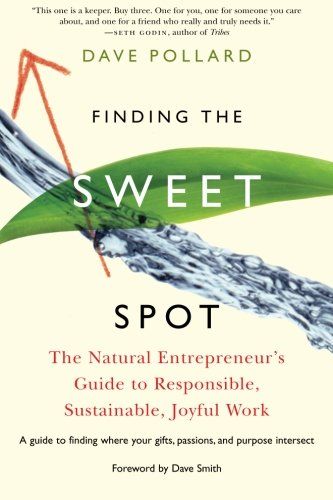
Finding the Sweet Spot: the natural entrepreneur's guide to responsible, sustainable, joyful work
"Now what am I going to do?" is a question many people ask—and leave unanswered—at critical potential turning points in their careers. Perhaps you’re a new graduate, but instead of lining up for a boring entry-level job at a big corporation, you wish you could start your own sustainable and responsible business

